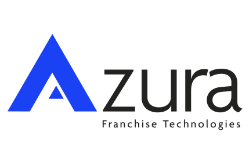Social-media advertising has several key benefits for franchisors. You can turn it on and off at will, set any kind of budget, access in-depth data about what’s working and what isn’t, laser-target your audience and adapt your strategy quickly and efficiently. So far so good but it can appear scary to those who are inexperienced in it and, in truth, this is an area where experience drives results.
The good news is that it’s easy to start gaining that experience by allocating a small budget and some time to test the market and refine your efforts on an ongoing basis to deliver better returns. Here’s how to get started.
Define your audience
Knowing who you are trying to reach is the first step in any marketing strategy and on social media it’s arguably more important than on other channels. You can target by a comprehensive set of interests, demographics, locations and lifestyle, so the better you know your prospects, the more effective your campaigns will be at driving quality leads. Looking for parents in Kent aged between 30 and 50? No problem. By determining a specific audience you can avoid wasting budget advertising in areas where you already have a franchisee and you can filter out people who are outside your demographic filters. Start by creating a persona of your ideal franchisees, spending time drilling down into who they really are and where they are in life.
Determine the right channels
While they still dominate, long gone are the days when your choice was simply between Facebook, Twitter and LinkedIn. eMarketer, the market-research company, recently reported that people under 25-years-old are leaving Facebook in droves in favour of Instagram and Snapchat. So if you’re looking for younger franchisees those platforms open up a host of opportunities to show off the visual side of your franchise. Television shows, social causes and Domino’s have even scored well on Tinder ad campaigns. Consider where your audience are spending their time, plan accordingly and swipe right for franchisee-marketing success.
Set your budget and goals
Without goals, you can’t determine the effectiveness of your campaigns or your ROI. Rather than vanity metrics such as number of likes and followers, focus on quality and quantity of leads – the first of those being the most important. A campaign generating” ten leads per month may not sound great but if half of those leads engage when you contact them then you’re saving time and money compared to a campaign that produces 30 leads of which you can only connect with 10%. Track both carefully. When it comes to your budget, start small and see what happens. This is easy to do as social-media marketing lets you set a capped pay-per-click budget for a defined time period, which you can increase once you’re seeing the right results.
Be appropriate for each channel
Although plenty of people complain that the lines are being blurred, remember that posting on LinkedIn is different from posting on Facebook and so is advertising on these platforms. Whichever platform you’re using, make sure you know it inside out as a user first. Think about what catches your eye and which type of adverts and posts generate comments and engagement. There are several advert options on each platform, so create multiple ads and experiment to find out what works best; compare carousel ads with single image ones for example. And you could try using franchisees on some and your own messages on others. A few general tips: the less text the better; keep things simple, clear and visual; and don’t use stock photos.
Create a compelling landing page”
Running adverts that simply click through to your franchise homepage is a waste of resources. Put yourself in your prospect’s shoes. For example, if you click an ad highlighting potential earnings in the franchise, then clicking through to a homepage with a multitude of other messages and no instant mention of money is a turn-off and you’ll quickly click off the page. You need to create a visual and engaging landing page that’s distinct from the rest of your website and drives home the key message you used in your advert. Consistency is essential. Ideally, use an image from your ad on the page too. Even if you host your landing pages within your website, strip out all the navigation menus from the page and just provide a single link back to your site at the bottom of the page. This allows you to guide the visitor on a simple journey without any distractions, directing them towards a single, clear call to action, which typically is inputting their details into a form for more information or a call back. Keep in mind that plenty of your visitors won’t know a lot about franchising, you should write and design your content accordingly.
Create multiple landing pages
Creating two landing pages in dedicated software like Crazy Egg or Unbounce lets you A/B split-test the effectiveness of your message and design by automatically directing some of your traffic to one page and some to the other. This is essential if you’re looking to maximise your results. By comparing the data on which landing page is working best in terms of converting more visitors to complete your call to action, you’ll get great insight into the right triggers for your prospects. For example, you could lead with videos and visuals on one page and a more text-based approach on the other and after a while you’ll know which is most effective at getting the right people to ask you for more information on the business. When you’re ready, create a new page to replace the lower performer of the two, then rinse and repeat over time.
Monitor, analyse and refine
Once your ads start running, you’ll receive a treasure trove of information in return, with all the data you could ever need to tweak your efforts and improve performance. Other than Snapchat, all platforms have powerful analytics tools which are simple to use for measuring reach, clicks and conversions. They allow you to compare the performance of each of your ads, so you know what’s working and what isn’t. You could experiment with ads leading on financials followed by others focused on work-life balance for example and gain an understanding of the strongest drivers for your audience. On top of the information from your landing pages and from Google Analytics on your website, you’ll start to build a gold mine of data on the success of your messages, design and prospect journeys. The trick is to continually refine your approach according to what the data shows is working best. Measure everything you can and you’ll drive better ROI from your marketing and fear of social media advertising will be a thing of the past.”

Paul Stafford
Having been the bfa's PR manager for over four years, Stafford knows a thing or two about the world of franchising. And in his current role as head of communications at Chantry, he helps businesses get to grips with creating killer content and see results from highly targeted online marketing campaigns.

Paul Stafford
Having been the bfa's PR manager for over four years, Stafford knows a thing or two about the world of franchising. And in his current role as head of communications at Chantry, he helps businesses get to grips with creating killer content and see results from highly targeted online marketing campaigns.


































